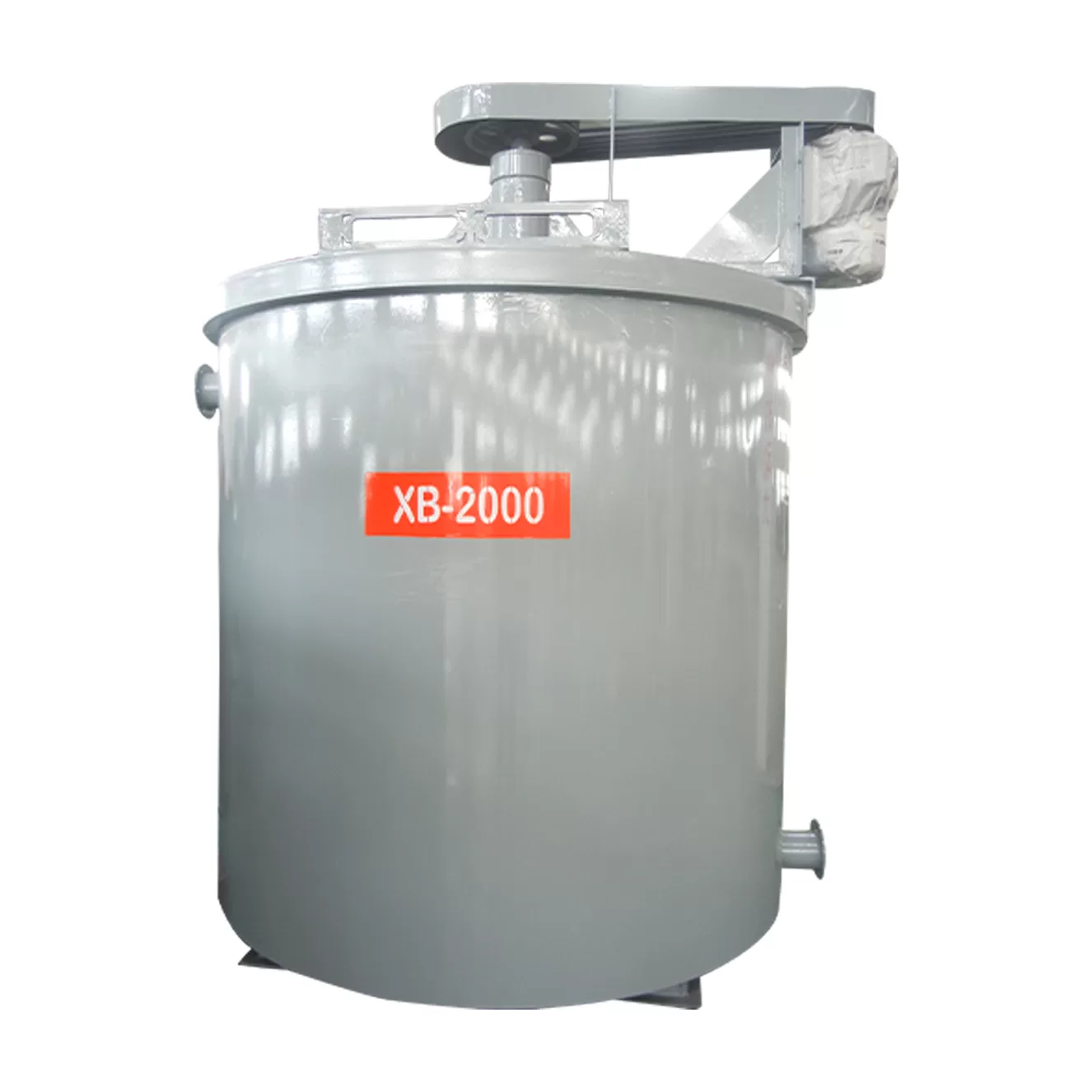全站搜索
Search the entire website
Search the entire website
Mixer are indispensable equipment in mining, chemical, building materials and other industries, used to evenly mix various materials.
The mining agitator, also called mixer, is a kind of agitating equipment used for ore pulp agitation before flotation operation, so that ore pulp and reagent are fully mixed. It can also be used for stirring other non-metallic minerals. Mixing barrels are very common in metal and non-metal beneficiation, such as flotation beneficiation, hydrometallurgy, rare and precious metal leaching and extraction, and are also used in many sewage treatment and production of some chemical raw materials.
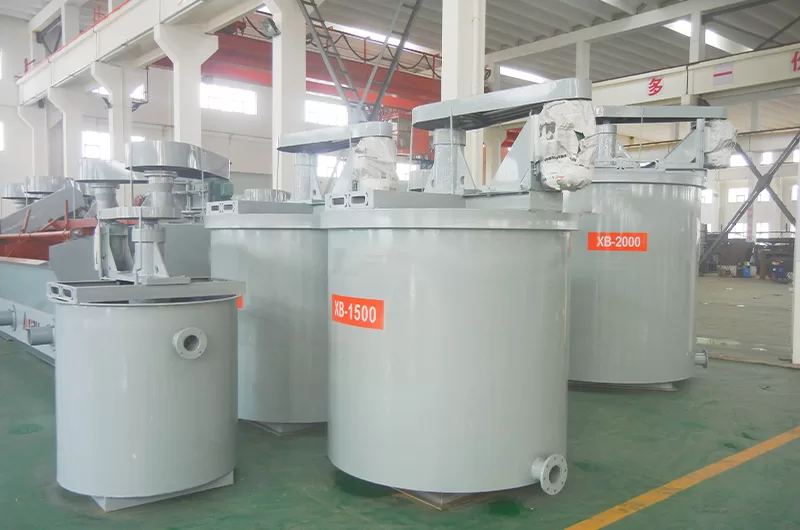
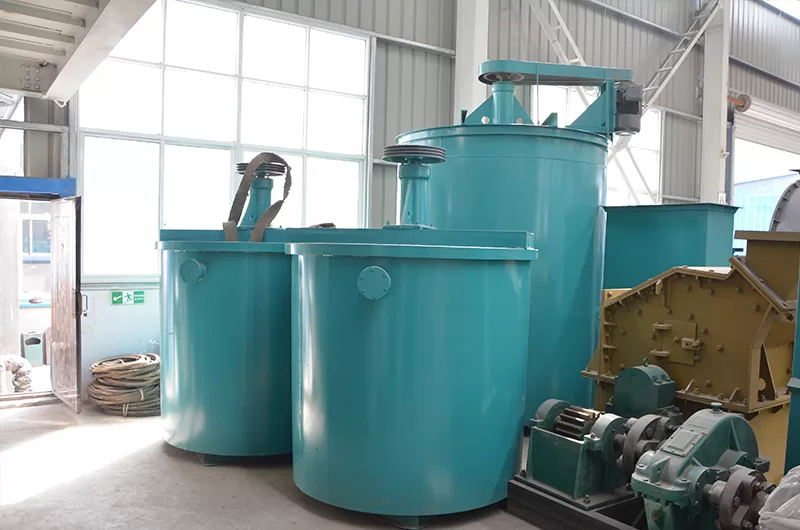
copper ore, gold ore, lead-zinc ore, fluorite ore, coal, ore, coal mine, bauxite ore, iron ore, talc, etc.
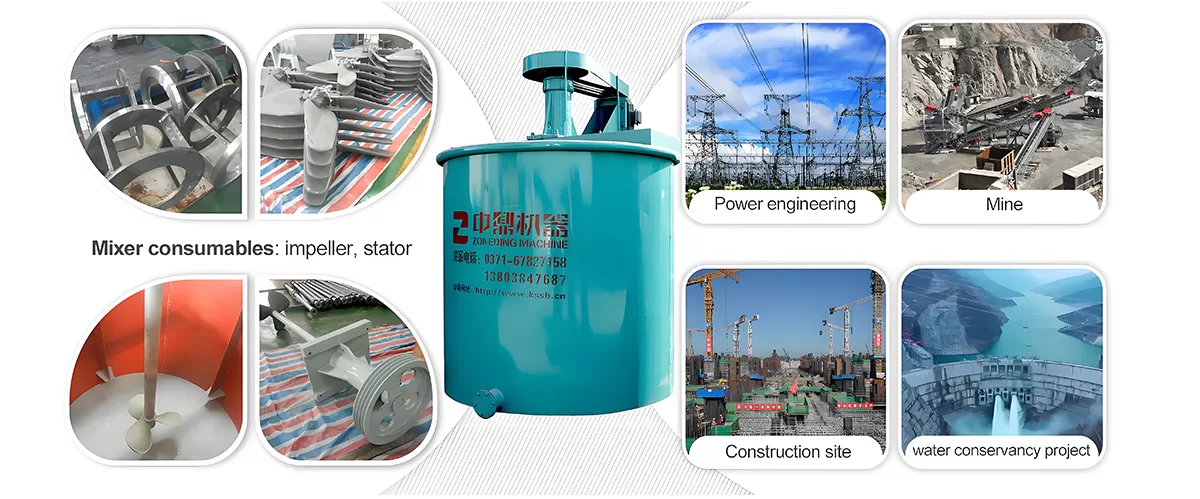
Mining mixer is used for mixing pulp before flotating separation work, which mixes the pulp with medicament sufficiently for mineral selection. The mixing tank can also used for mixing other non-metallic minerals. It is applied in the material with density not higher than 30% (calculated by weight) and fixed material size less than 1 mm. It is flat-bottomed barrel with mechanical mixing method by radiant circular spiral impeller.
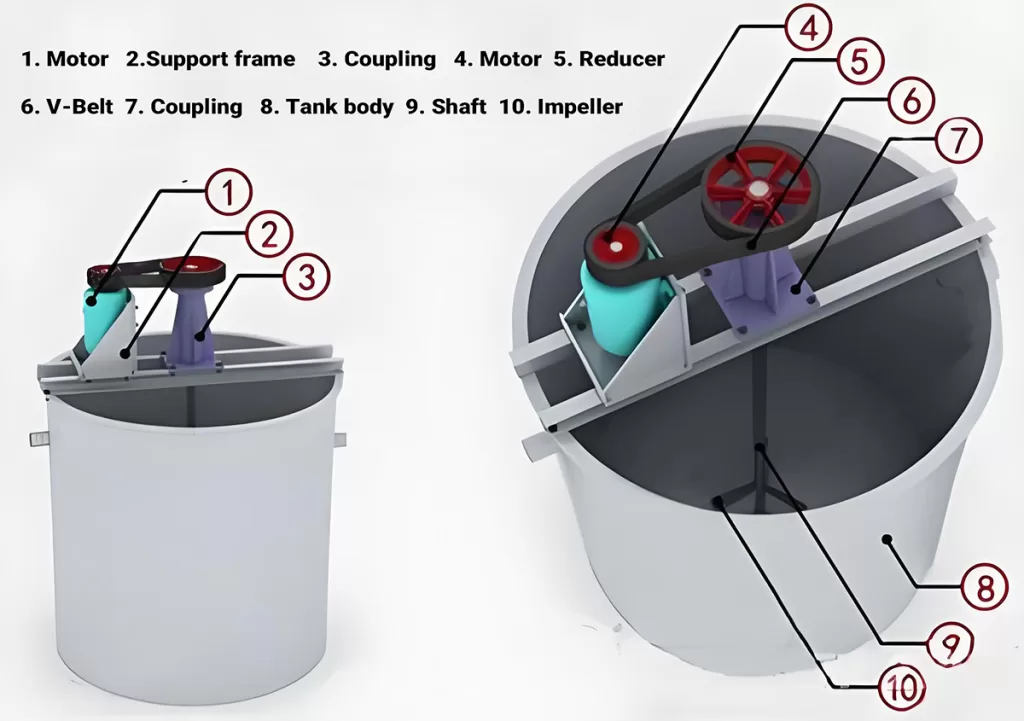
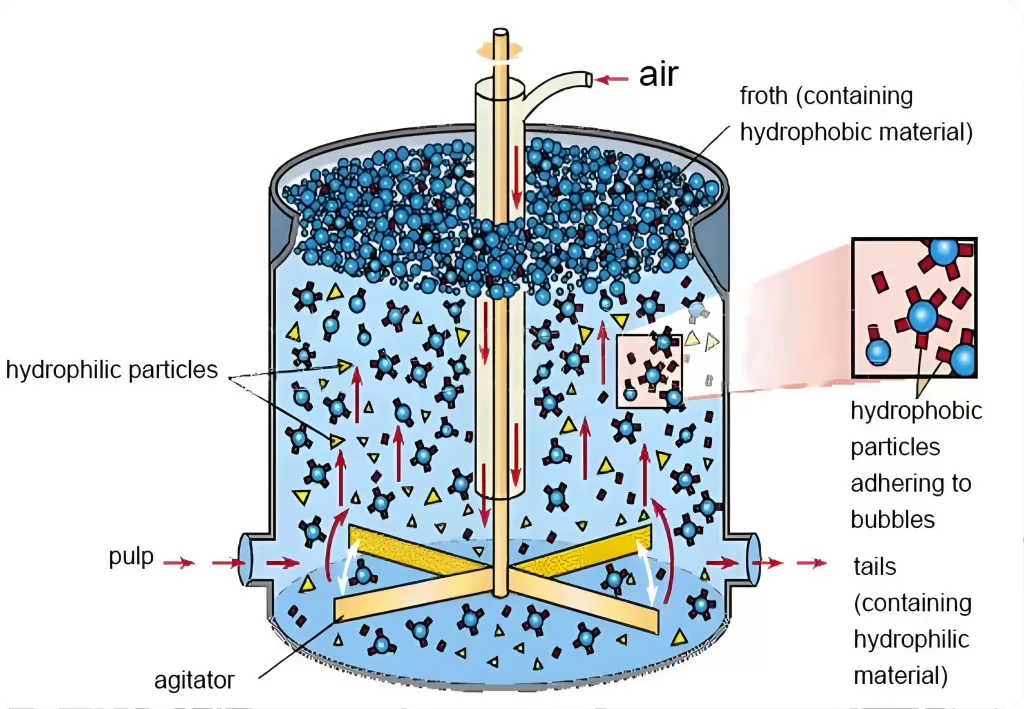
When the machine works, the pulp and pharmaceutical take circular motion by the rotation of the impeller to get mixed evenly in the whole tank, and then the mixed suspension liquid discharges from the overflow part.
There is less ash left. Besides, there is a watershed set on the bottom. So the whole machine is very clean.
Advanced equipment performance. The quality of production is stable. The mixing is even. And the discharging is quick.
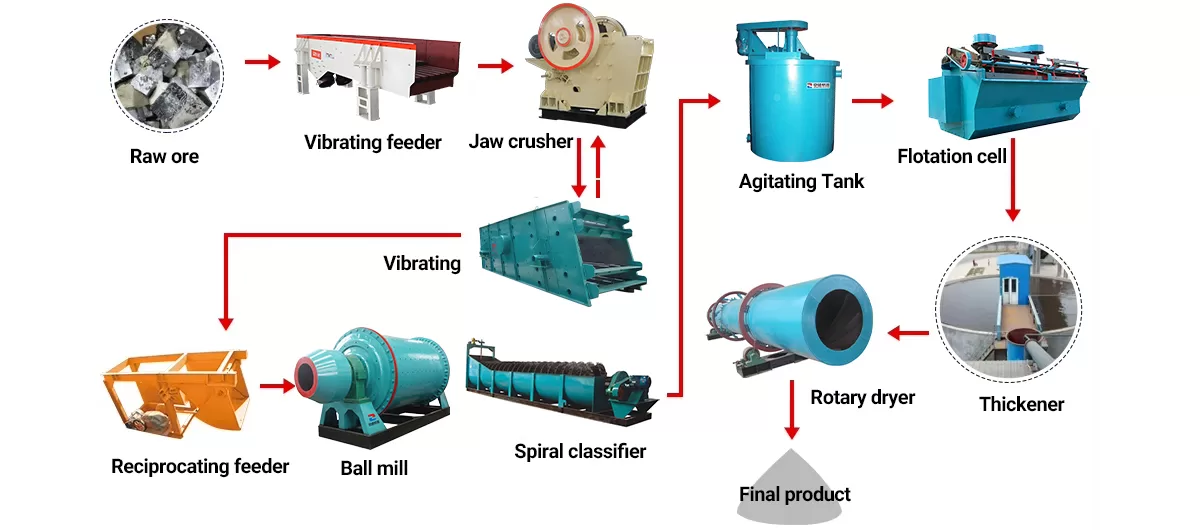
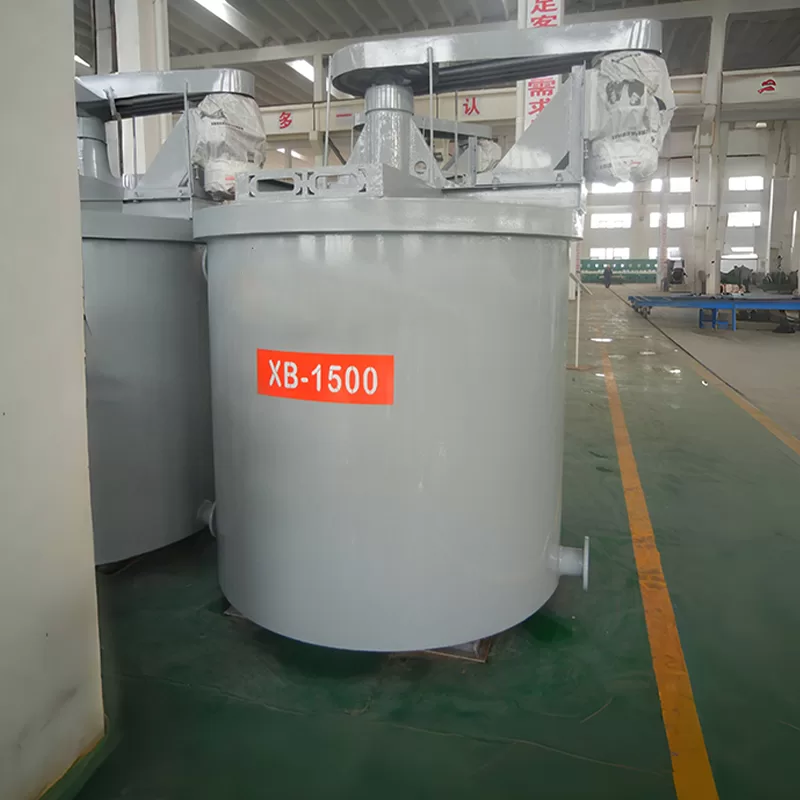
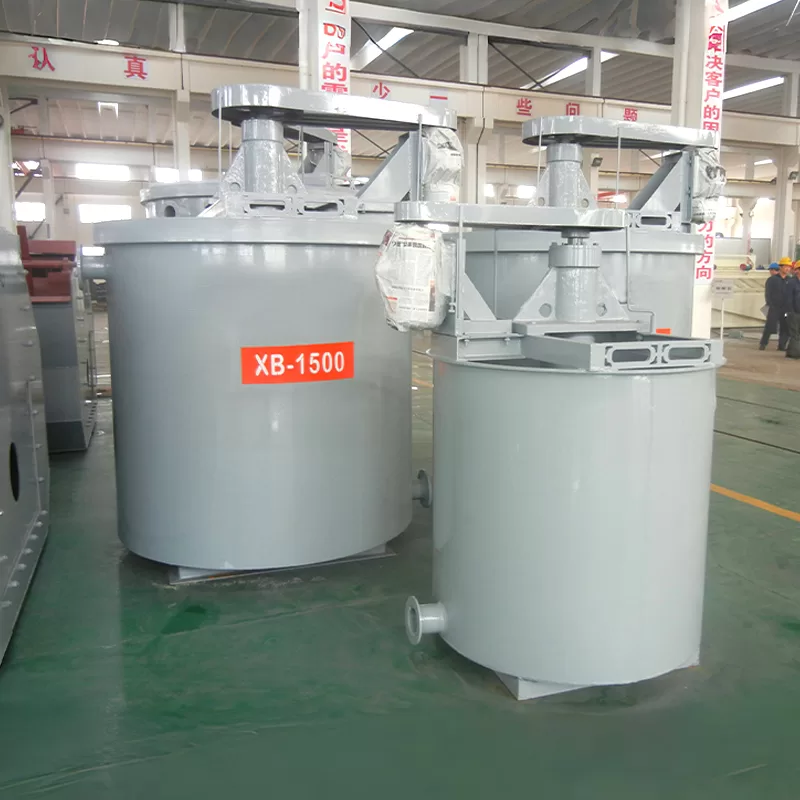
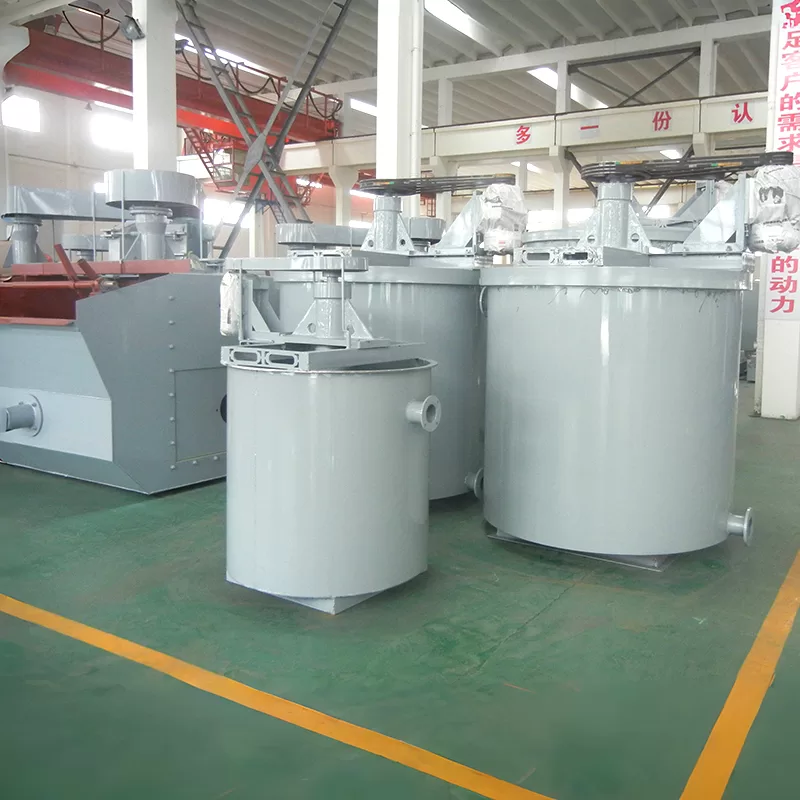
| Category | Specification Model | Dimensions | Effective cubage(m³) | Rotate speed (r/min) | Motor power (kw) | Dimensions (mm) | Total weight (kg) | |
| Diameter (mm) | Height (mm) | |||||||
| Agitating tank | XB-10×10 | 1000 | 1000 | 0.58 | 390 | 1.5 | 1130×1130×1521 | 1050 |
| XB-12×12 | 1200 | 1200 | 1.18 | 390 | 2.2 | 1130×1330×1721 | 1160 | |
| XB-15×15 | 1500 | 1500 | 2.2 | 280 | 3 | 1750×1640×2190 | 1270 | |
| XB-20×20 | 2000 | 2000 | 5.6 | 210 | 5.5 | 2380×2160×2850 | 1700 | |
| XB-25×25 | 2500 | 2500 | 11.2 | 190 | 7.5 | 2990×2720×3540 | 3500 | |
| XB-30×30 | 3000 | 3000 | 19 | 140 | 18.5 | 4030×3270×3010 | 5200 | |
| XB-35×35 | 3500 | 3500 | 29 | 230 | 30 | 3920×3740×4970 | 6630 | |
| XB-40×40 | 4000 | 4000 | 45 | 210 | 37 | 4520×4320×5570 | 7830 | |
| Lifting type | XBT-10×15 | 1000 | 1500 | 1 | 510 | 2.2 | 1130×1130×2070 | 1250 |
| XBT-15×20 | 1500 | 2000 | 2.9 | 400 | 4 | 1636×1768×2785 | 1677 | |
| XBT-20×20 | 2000 | 2000 | 5.6 | 312 | 11 | 2180×2220×3015 | 3100 | |
| High-efficiency leaching tank | XF-20×20 | 2000 | 2000 | 7.07 | 82.5 | 1.5 | 2032×2032×3595 | 2400 |
| XF-25×30 | 2500 | 3000 | 13.5 | 57.6 | 2.2 | 2532×2532×4152 | 3670 | |
| XF-30×30 | 3000 | 3000 | 22.97 | 50 | 2.2 | 3180×3180×4673 | 5340 | |
| XF-35×40 | 3500 | 4000 | 35.6 | 41 | 4 | 3685×3685×5314 | 7140 | |
| XF-40×45 | 4000 | 4500 | 52.78 | 33.5 | 4 | 4185×4185×5814 | 9300 | |
| XF-45×50 | 4500 | 5000 | 74.75 | 33.5 | 5.5 | 4685×4685×6466 | 10500 | |
| XF-50×56 | 5000 | 5600 | 102.1 | 30.6 | 5.5 | 5185×5185×6975 | 12300 | |
| XF-55×60 | 5500 | 6000 | 135.4 | 24.4 | 7.5 | 5670×5670×7569 | 13500 | |
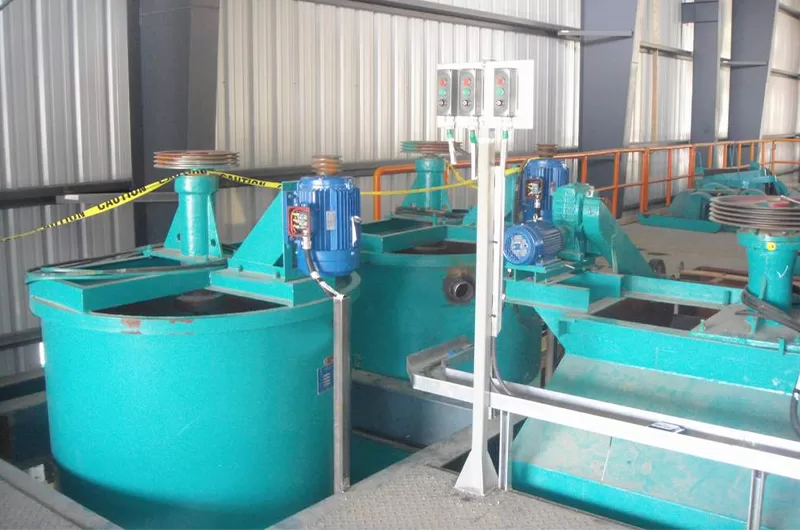
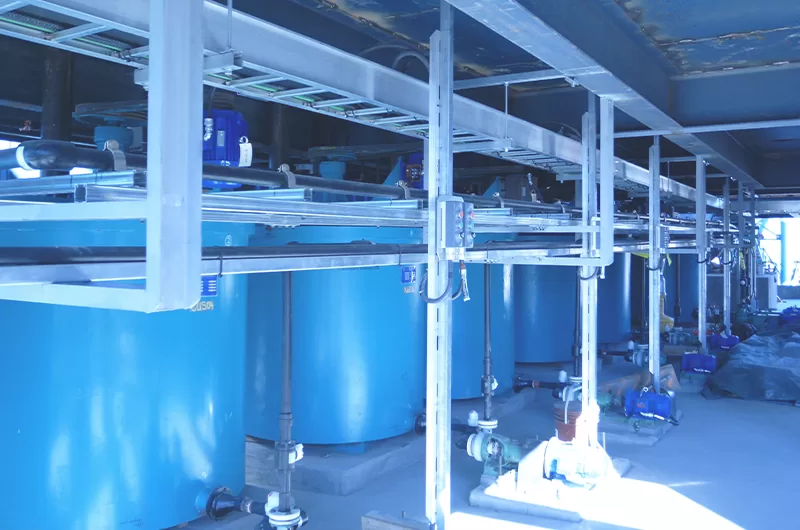
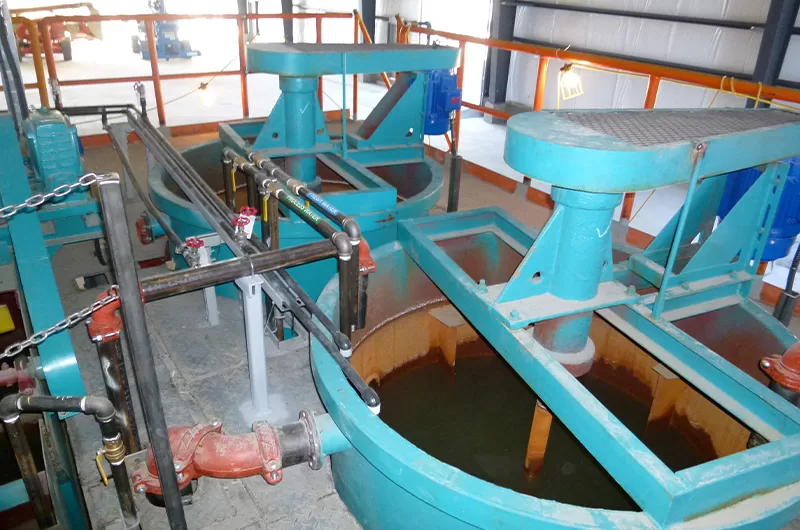
Mining Mixer Tanks are industrial containers designed for mixing various slurries, reagents, and chemicals used in mineral processing and mining operations.
Mining Mixer Tanks use impellers to agitate and blend materials, ensuring uniform mixing of solids and liquids for optimal chemical reactions and processing.
Mining Mixer Tanks enable efficient reagent mixing, improve mineral recovery, ensure consistent slurry quality, and optimize chemical usage in mining processes.
Mining Mixer Tanks are typically made of durable materials like stainless steel or FRP (Fiberglass Reinforced Plastic) to withstand corrosive mining environments.
Consider tank volume, material compatibility, impeller type, mixing intensity, corrosion resistance, and operating conditions when selecting Mining Mixer Tanks.
